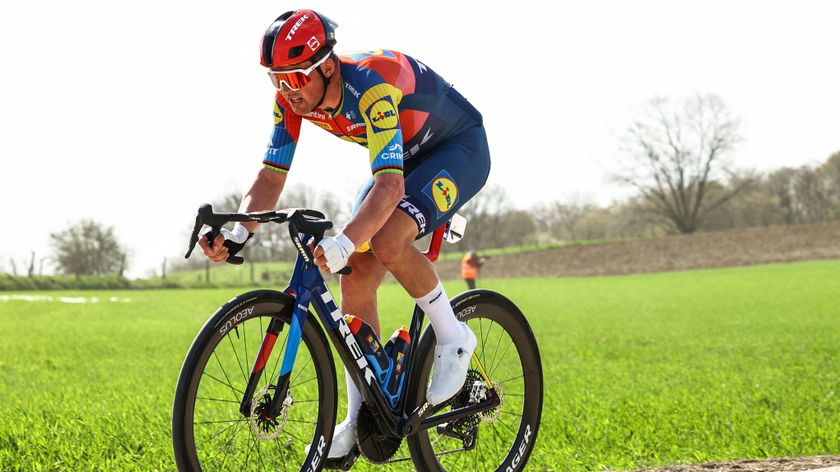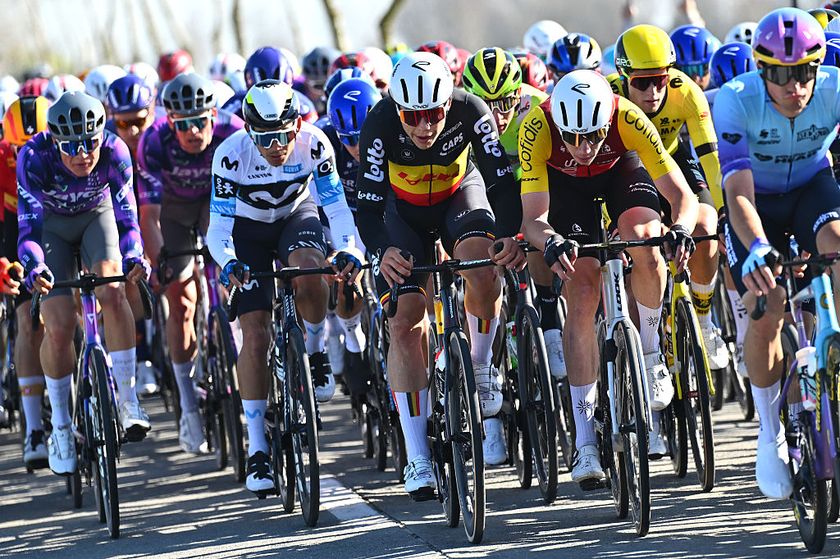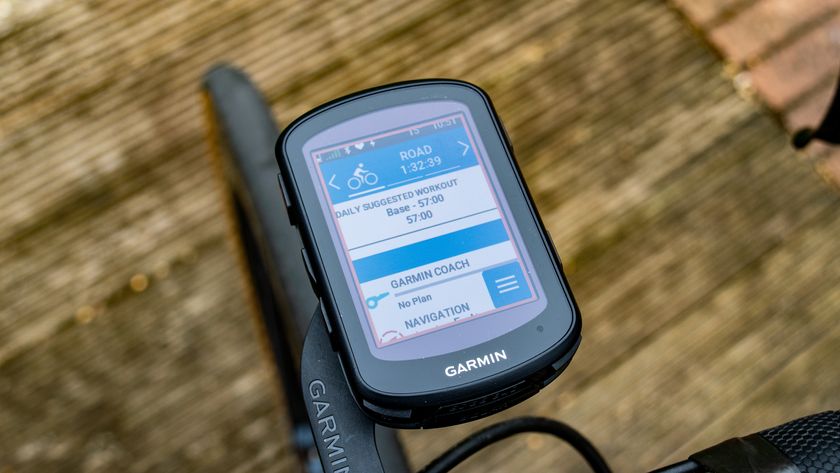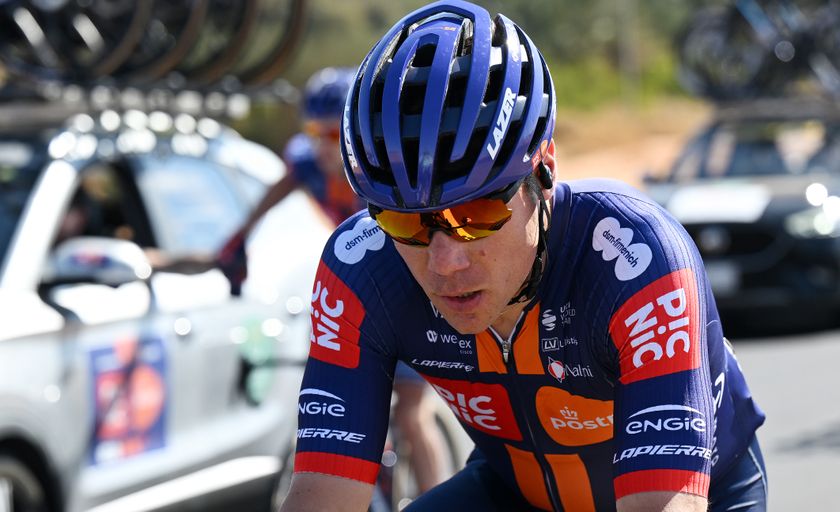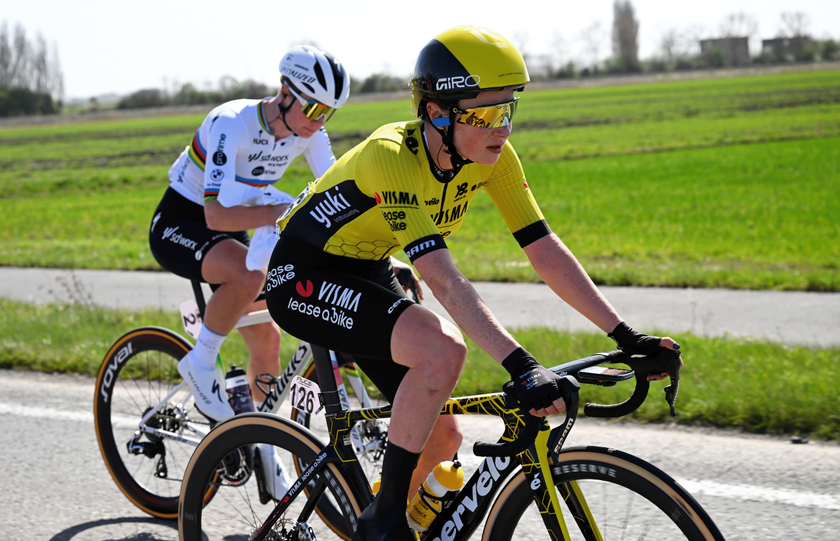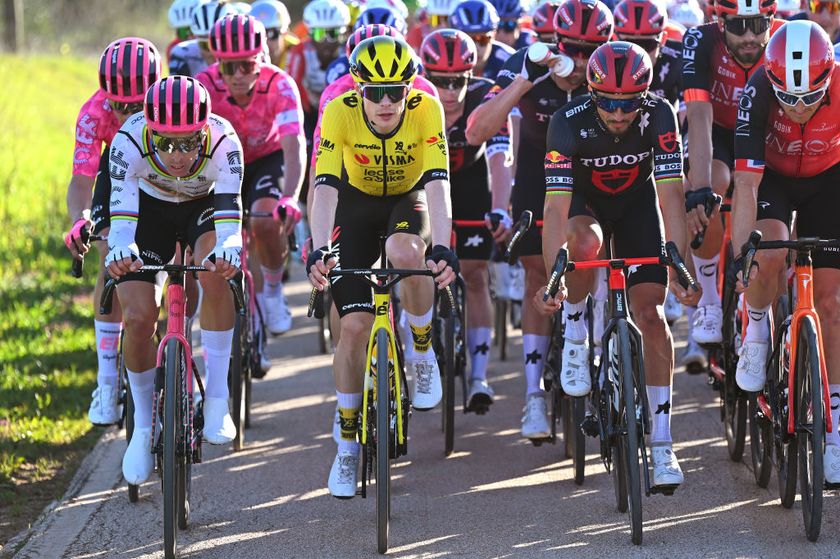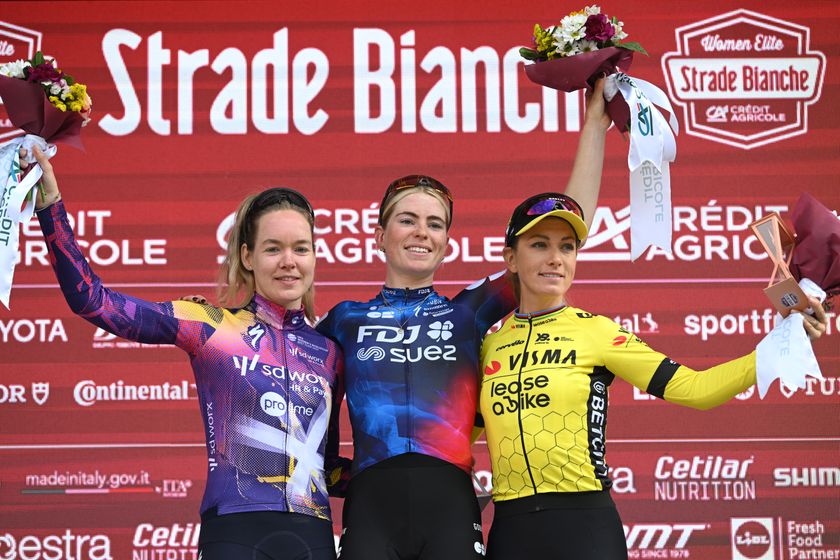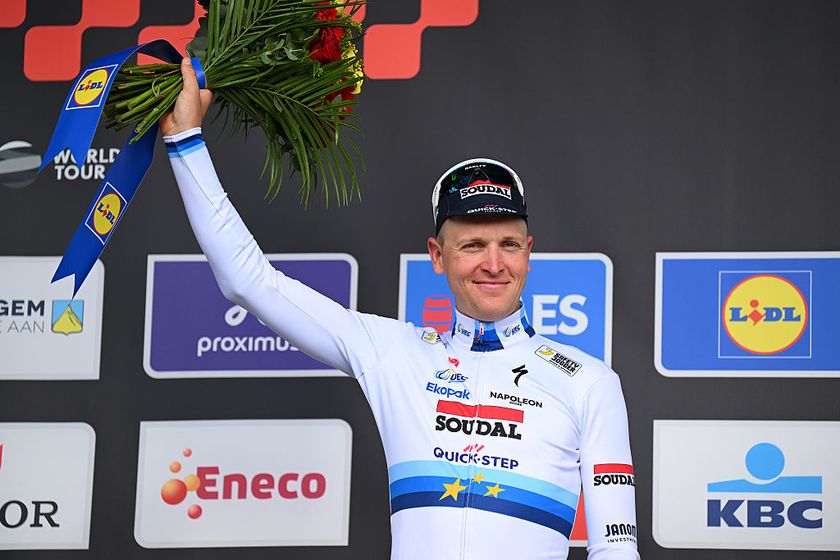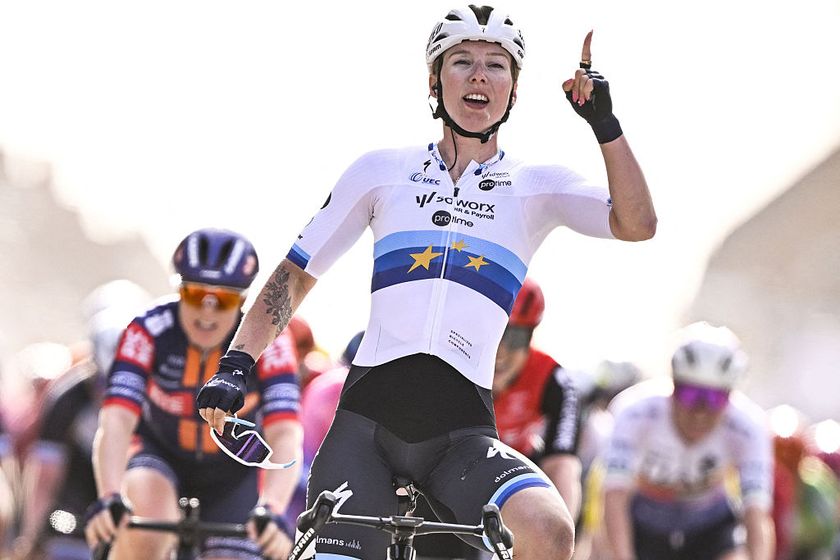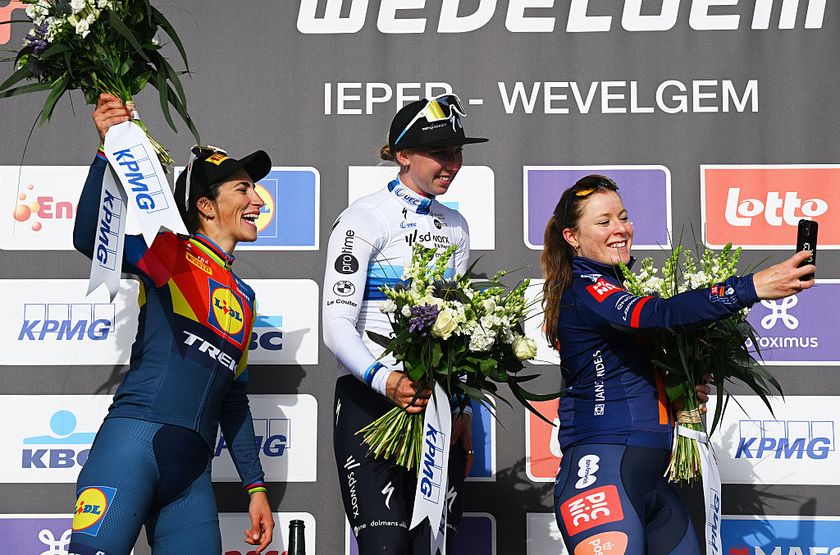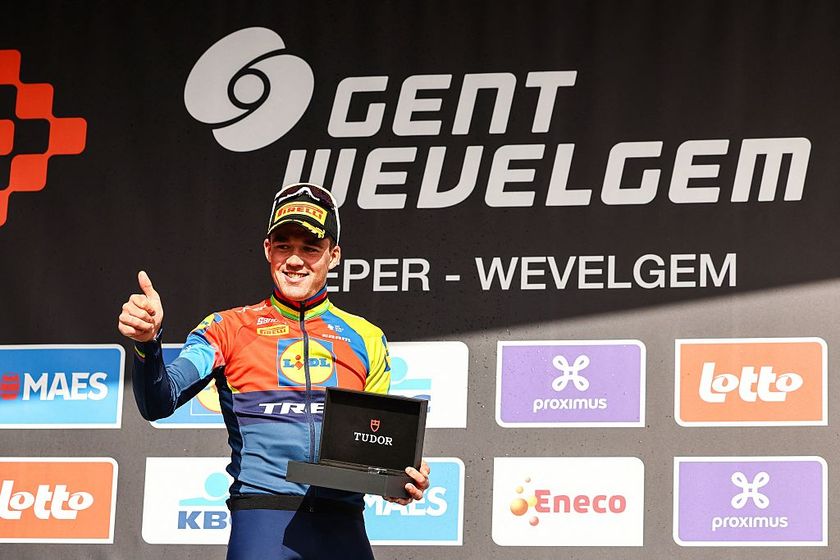Pardilla set to return to racing ten months after Pais Vasco horror crash
Caja Rural pro suffered major injuries in controversial mass pile-up





Ten months after a controversial mass pile-up on the opening stage of the 2015 Vuelta al País Vasco left him with four broken ribs, a punctured lung and fractures in his scapulae, right hand, left wrist and thumb, Caja Rural-Seguros RGA rider Sergio Pardilla is – finally – preparing to return to race.
Half a dozen riders went down in the crash, which happened when the middle part of a group was passing metre-high metal poles, topped with orange traffic cones, on the stage’s finishing straight in central Bilbao.
The presence of the poles in such a risky location and subsequent accident provoked a storm of criticism over how or why they had been left there, as well as a brief sit-down protest by riders at the start of the next stage.
Speaking at the time, American Peter Stetina – one of the worst affected riders, breaking four ribs, a knee cap and a tibia – told the BMC Racing website: "Some guys barely missed the poles and some clipped them. I didn't even have time to react or pull the brakes. You don't expect to have fixed obstacles in the middle of a field sprint.”
Stetina, now with Trek-Segafredo, returned to racing in August at the Tour of Utah, but Pardilla, who turned pro in 2006 with the small Viña Magna-Cropu squad and who has raced with Caja Rural since 2015, has taken considerably longer to make a recovery. But even now, as he prepares to start racing in the GP Marseillaise on January 31, Pardilla is not sure whether that recovery is a full one even after ten months out of action.
“I’m training normally, but I’m still not certain how my left hand will feel when I’m in competition,” Pardilla told Spanish sports daily MARCA on Monday. “According to the surgeon who treated me, my hand was ripped apart in the crash.
“The mental element in my rehabilitation has been the hardest part to handle. If you’re a professional sportsman and to go from a very active life – racing, lots of journeys – to nothing is tough. It’s also hard being dependent on people for your everyday life.
Get The Leadout Newsletter
The latest race content, interviews, features, reviews and expert buying guides, direct to your inbox!
“After nearly a year away from racing, I’m going to have to take it step by step.
“When I saw the images, my first thought was that I was lucky to be still here to be able to talk about it. I went from 55 kph to nothing. I didn’t see anything, I didn’t know why I’d crashed.”
On the issue of the obstacles themselves, Pardilla was adamant. “In a race at the level of the Pais Vasco those sorts of errors can’t be made.”
Rather than focus on the past, however, Pardilla prefers to concentrate on the future. “It’s a new year and the odometer is on zero,” he told MARCA. “My only New Year’s wish is for health, the rest I’ll handle. I want to help the team win as many races as possible.”
Alasdair Fotheringham has been reporting on cycling since 1991. He has covered every Tour de France since 1992 bar one, as well as numerous other bike races of all shapes and sizes, ranging from the Olympic Games in 2008 to the now sadly defunct Subida a Urkiola hill climb in Spain. As well as working for Cyclingnews, he has also written for The Independent, The Guardian, ProCycling, The Express and Reuters.
